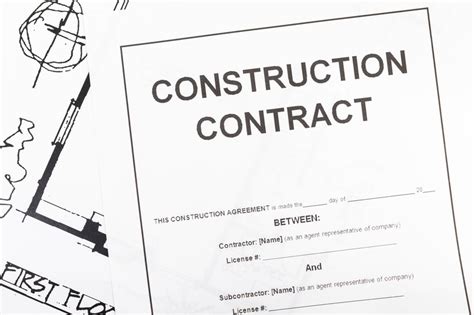
Construction contracts
There are a large variety of contract forms, with the most frequently employed discussed here. Many associations and professional societies develop contract forms that align with the types presented. Therefore the owner is not required to create a new contract form from scratch. Instead, an owner can rely on the structures that have been refined over time incorporating the lessons learned from experience.
Stipulated sum
Also called a lump sum or fixed-price contract, is the most basic form of agreement between a contractor and owner. Traditionally this contract follows the design by the architect and engineers and a formal bidding process. It requires that the scope and milestones are thoroughly developed to allow contractors to produce bids. It requires that the contractor agree to be responsible for the proper job execution at a set price. This form places the risk on the contractor to complete the scope of work within the milestones, and bear the responsibility of cost overruns.
Cost plus a fee
If the scope of work has not been defined and the owner needs to expedite the process for completion as early as possible, the cost plus a fee is a viable option. The contractor is reimbursed for costs, plus it’s overhead and an agreed-upon profit level. If actual costs are lower than estimated, the owner gets to keep the savings. If they are higher than estimated, the owner must pay the additional amount, unless the cost is capped at a guaranteed maximum price (GMP). If the parties agree to a GMP, it is typically estimated at a point where the scope is sufficiently developed for subcontractors and suppliers to price.
Construction Manager as advisor (CMa)
A construction manager is added to the construction team (owner, architect, and contractor) to serve the owner as an adviser and fiduciary. The owner is best served when the CMa joins the owner’s team before the start of design and continues through owner occupancy. Because the CMa is typically paid a fee for its services, which is independent of the project cost (percentage of costs), the CMa’s goals are not influenced by the cost of the project and continuously focuses on reducing costs while maintaining function, and aesthetics. This approach enhances the level of expertise applied to manage a project.
Construction manager as constructor (CMc)
A CMc is similar to a CMa, except that the CM constructs the project rather than only serving as an advisor, expert, and fiduciary. The CMc combines the functions of contractor and construction manager into a single entity. The CMc may provide a guaranteed maximum price (GMP), and it assumes control over the construction work through subcontractors, and possibly self-performing some of the work. Upon the owner’s acceptance of the GMP through an amendment, typically after the design is complete, the CMc is contractually bound to provide labor and materials to complete the project at or below the guaranteed maximum price.
Design Build (DB)
The owner manages only one contract with a single point of responsibility. The designer and contractor work together from the beginning, as a team, providing unified project recommendations to fit the owner’s schedule and budget.
The design-builder may be a joint venture or a contract between a construction contractor and an architectural firm, or the entity may have both design and construction capabilities within its corporation. The design-build entity is engaged by the owner early with programming and continues through the occupancy phase. This contract can convert to a guaranteed maximum price after the design is complete, which would transfer some financial risk from the owner to the DB entity.
Engineer Procure Construct (EPC)
EPC contracts are commonly utilized to undertake construction works by the private sector on large-scale and complex infrastructure projects. Most Oil and Gas plants are delivered through this option. Under an EPCC contract, a contractor will provide a complete facility to the owner and performs the startup so that the plant or project is ready for operation. Therefore EPC contracts are referred to as turnkey construction contracts. In addition to delivering a complete facility, the contractor must deliver that facility for a guaranteed price by a guaranteed date, and it must perform to the agreed-upon production. The EPCC contractor coordinates all design, procurement, and construction work and ensures that the whole project is completed as required and in time. It is common for the EPC contractor to self perform a large amount of the work, and therefore typically can control the production without the need to subcontract a majority of the scope.


